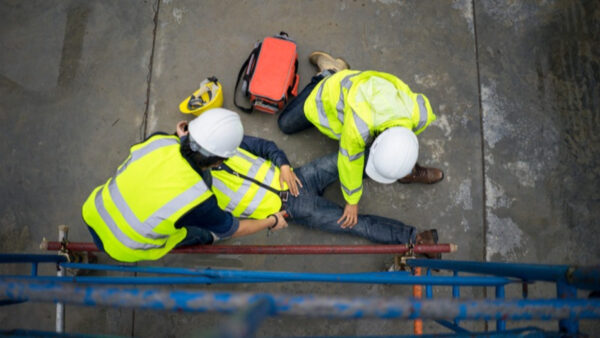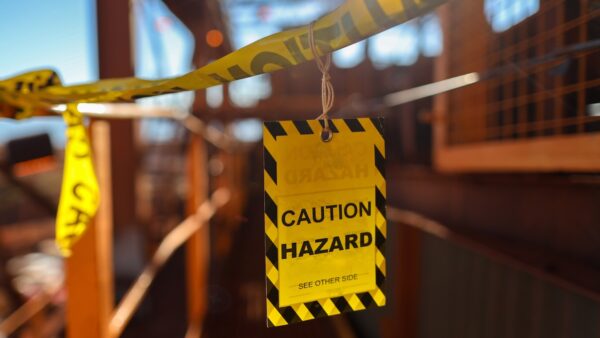
After a series of amendments, the Building Safety Act has finally become law – though construction professional bodies have expressed concerns about its likely impact.
Health and safety professionals and the wider construction industry have welcomed the arrival of the Building Safety Act – with some reservations.
The Association for Project Safety said it was “pleased that the Act will facilitate the required competence and accountability for those involved in building regulations compliance”, while noting that “much of the detail will be introduced in secondary legislation”.
The Chartered Institute of Building also welcomed the news that the Act had passed into law, while expressing concerns about “some of the recent amendments, such as removing the duty to appoint a building safety manager”.
The Construction Industry Council, which represents most professional bodies across the built environment, gave the Act “three (muted) cheers”. It said: “The Act represents a paradigm shift in the way in which residential buildings are to be designed, built, managed and regulated.”
But the council added: “Despite the five years that have elapsed since Grenfell, the wider industry is still ill-prepared for the changes to come.”
“The Act represents a paradigm shift in the way in which residential buildings are to be designed, built, managed and regulated.”
The Building Safety Bill was first debated by the House of Commons in July 2021. It was passed, after a series of amendments, on 28 April 2022. The government introduced the Bill in response to the Grenfell Tower disaster and Dame Judith Hackitt’s subsequent Independent Review of Building Regulations and Fire Safety.
While many of Hackitt’s recommendations have become law, some have been discarded during the Bill’s passage through parliament.
The Act enshrines in law the role of the Building Safety Regulator, which sits inside the Health & Safety Executive, and will oversee the new regime with powers of enforcement and sanctions. The National Construction Products Regulator will be able to remove dangerous products from the market.
The New Homes Ombudsman also comes in with the Act and will provide redress for buyers who purchase faulty new-build homes.
One of Hackitt’s key proposals, the requirement for a ‘golden thread’ of information for the storage and dissemination of all safety-related matters in the design and construction of high-risk residential buildings, has also made it through into the final Act.
There are new requirements on dutyholders to have clear accountability and statutory responsibilities as buildings are designed, constructed and refurbished. But Hackitt’s recommendation for the new role of building safety manager, to provide a single point of responsibility for in-scope buildings, was dropped. The government included the role in their draft bill but deleted it on 22 March due to the extra cost it would mean for leaseholders.
The Building Safety Act represents the biggest shake-up in the building regulations for 40 years. Many of the Act’s provisions will not come into force for another 12 to 18 months and will require secondary legislation.
A recent survey by Construction Management magazine found that only 23% of construction professionals think that they and their organisations are ready for the Bill.
Reaction to the Building Safety Act
Construction industry organisations respond to the changes the legislation will bring.
Association for Project Safety
“The APS welcomes the changes that the Building Safety Act will introduce, which will complement the existing CDM 2015 regulations and lead to a significant improvement in fire and structural safety for occupants in higher-risk buildings.
“The arrangements for the management of higher-risk buildings in occupation are also welcomed as are the measures for ensuring that remedial work will be carried out and funded by the responsible parties. The Act… will require significant upskilling for many clients, designers, contractors and building managers.
“The construction industry must ensure that consumers get buildings designed and built to the appropriate safety standards and that we never have another Grenfell.”
Chartered Institute of Building
“We are pleased the Building Safety Bill has received Royal Assent to ensure building safety is a priority and to provide much needed accountability in the system.
“This provides long overdue certainty for the industry, though the next 12 to 18 months will be crucial in preparing built environment professionals for the new roles and competencies that will be required.
“However, concerns remain that some of the recent amendments, such as removing the duty to appoint a building safety manager, will lead to a lack of clarity over the right competencies and training for those in the ‘accountable persons’ role and potential inconsistency in the implementation of building safety management regimes.”
Construction Industry Council
“CIC has reservations about the extensive changes that have been made during the passage of the Bill. In particular, the holistic process recommended by Dame Judith Hackitt has been cherry-picked. Her rounded approach to achieving building safety has been impacted.
“CIC is also concerned about the impact of extended liability under the Act, including for any works to dwellings (whether higher risk or not). It is particularly concerned about extending the period of liability under the Defective Premises Act from six to 30 years. This amendment is likely to further exacerbate an already uncertain market for professional indemnity insurance.
“In tandem with the transitional period of 18-24 months for the secondary legislation, there needs to be considerable communication to create the necessary culture change in the industry and absorb the new regulatory regime.”











